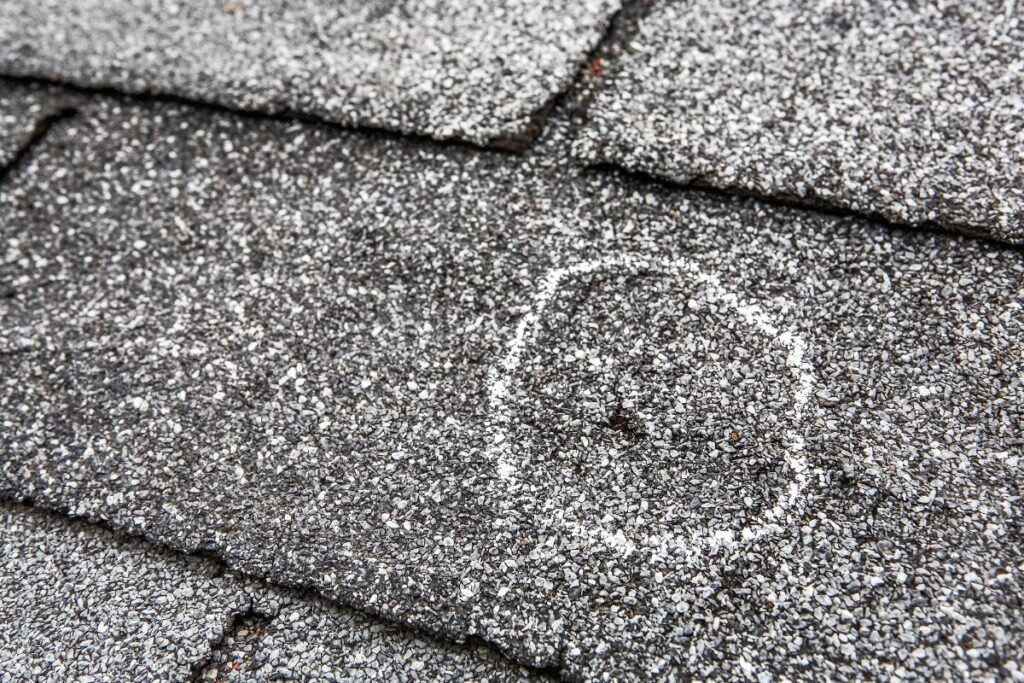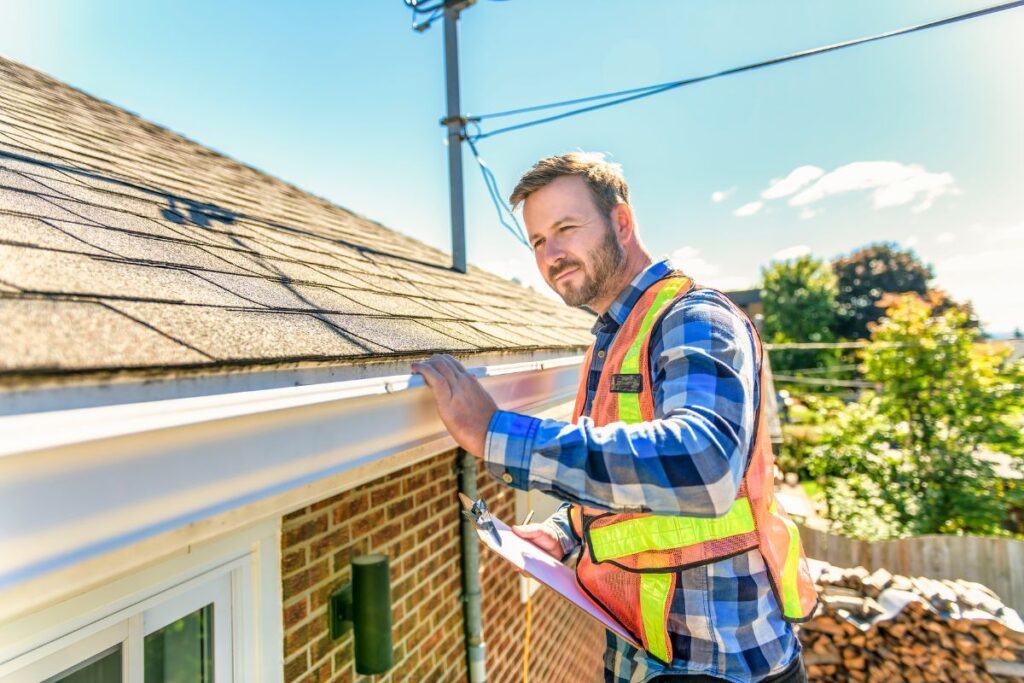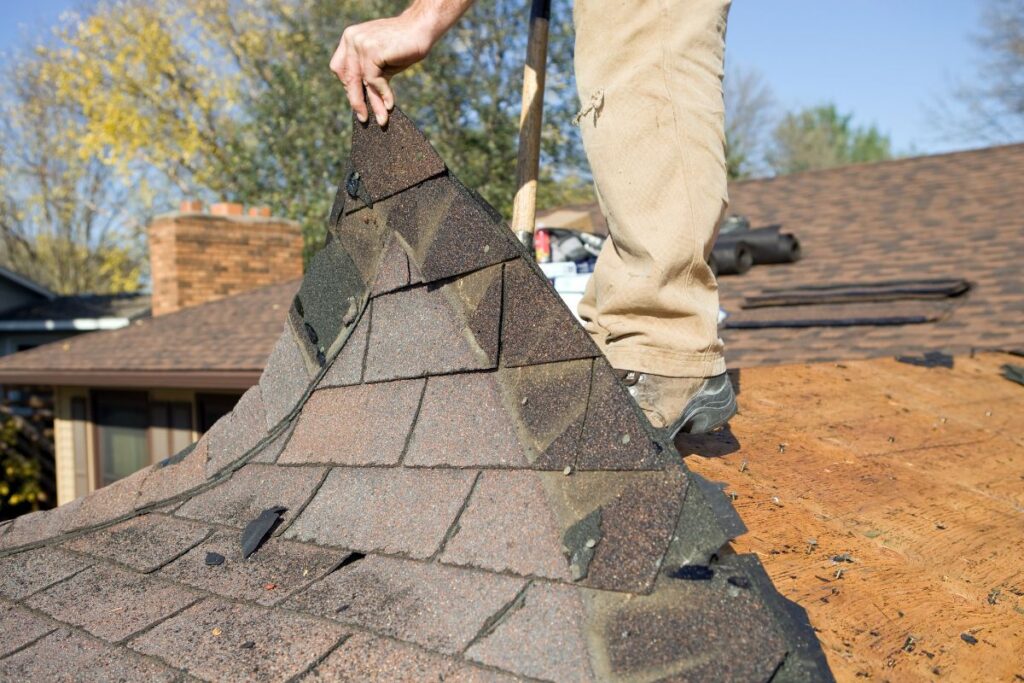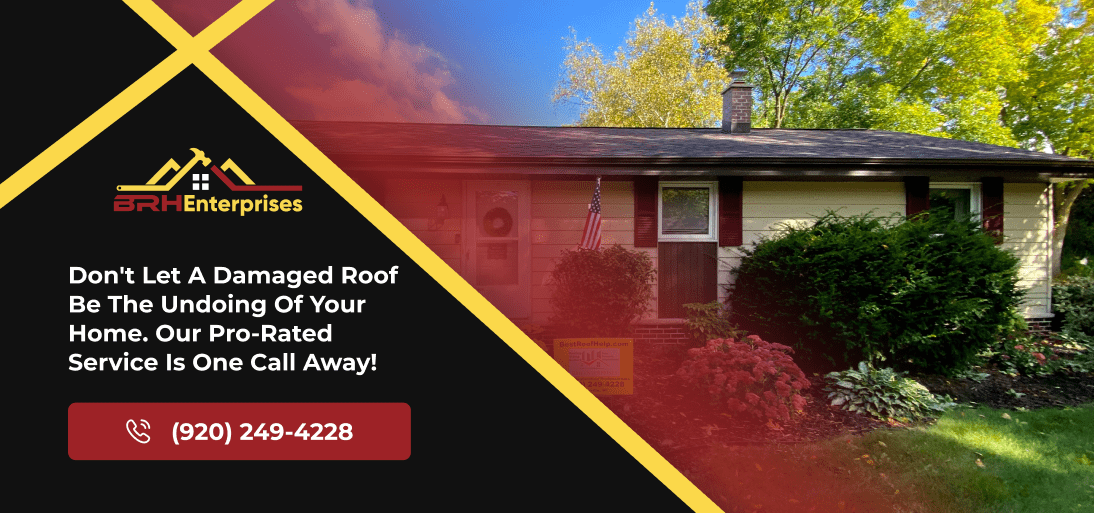How To Assess And Repair Hail-Damaged Roofs
Estimated Reading Time : 6 Min.

Spring and summer are the peak seasons for hailstorms, which can cause significant damage to the exteriors of homes and businesses. From minor dents to major structural damage, hail can compromise the integrity of your roof.
In this blog post, we’ll show you how to identify and assess any damage to your roof so you can get the hail damage repair solutions you need as soon as possible.
How to Identify Hail Damage on Roofs
Roof damage can result from hailstorms, especially when there are big, dense hailstones. In this section, we will go over common indications of hail damage for different roofing materials.
1. Asphalt Shingles

Asphalt shingle hail damage appears as brown or black patches, dents, or bruises, usually in an uneven pattern. This impact has the potential to loosen granules and, in extreme circumstances, shatter or fracture shingles, leaving the roof prone to leaks and water damage. Hail damage can cause granules to loosen, which accelerates premature aging and deterioration.
2. Metal Roofing Panels
Large hailstones can still cause damage to metal roofing systems, even though they are more durable than asphalt shingles. When hail strikes a metal roof, the result is usually dents, scrapes, or gouges, along with chipped or scratched paint and bent or warped metal panels. In addition to affecting the roof’s aesthetics, dents, scratches, and holes must be checked and repaired right away because they can cause rust, corrosion, and premature deterioration.
3. Clay Tiles
Chips, cracks, and breaks are the most common signs of hail damage to clay tiles. In rare cases, the damage can cause the tiles to become loose and reveal the underlayment below. Though they are strong and common in warm climates, clay tiles are brittle and can break from hail. In order to keep the roof functioning and stop water damage and leaks through gaps in the underlayment, any chips, cracks, or breaks must be promptly inspected and repaired.
4. Wood Shingles
Common in temperate regions, wood shingles are naturally beautiful but can sustain hail damage. Wood shingles damaged by hail can develop splits, dents, or cracks. Occasionally, this causes the shingles to become mushy or spongy and paint to chip or scratch. It is imperative to inspect and fix any dents, cracks, or splits to avoid water damage, leaks, and accelerated deterioration from the wood’s exposure to the elements.
Assessing the Extent of Hail Damage
To assess the extent of hail damage and to get proper hail damage inspection for your roof, follow these steps:
1. Inspect the Roof Safely:
Ensure safety before inspecting the roof. Avoid doing so in wet, icy, or slippery conditions. Use a ladder with stabilizers and wear appropriate safety gear, such as safety glasses and non-slip shoes. If you are unsure of the process, consider hiring a professional roofing inspector.
2. Inspect the Attic and Ceiling for Water Damage:
When examining for hail damage, don’t overlook the interior. Check the attic and ceiling for water stains, dampness, or mold growth, as these could indicate leaks. Addressing interior damage promptly is essential to prevent further deterioration and potential health hazards.
3. Check the Flashing and Ventilation Systems:
Inspect flashings around chimneys, vents, and skylights for damage caused by hail. Ensure they are securely placed and properly sealed to prevent water intrusion. Additionally, assess the ventilation system to prevent moisture buildup, which can worsen hail damage.
4. Evaluate Siding and Windows for Damage:
Hailstorms can damage more than just the roof. Check siding materials for dents, cracks, or chips, and inspect windows for broken glass or damaged frames. Timely repairs can prevent further water infiltration and maintain your home’s exterior integrity.
5. Check the Gutters and Downspouts:

Inspect gutters and downspouts for dents, damage, or debris. Clogged gutters can lead to water damage with mold growth, indicating potential roof damage from hail. Document any observed damage.
6. Document the Damage for Insurance Purposes:
Capture photos or videos of the damage and make a detailed list of affected areas. This documentation aids in filing an insurance claim and is evidence of the extent of the damage.
7. Hire a Professional Roofing Inspector if Needed:
If you are uncomfortable with self-inspection or uncertain about the extent of the damage, call a professional roofing inspector. They can provide a thorough assessment and detailed repair report, assist in the insurance claim process, and offer repair or replacement recommendations.
Repair Tips for Hail-Damaged Roofs
If you find evidence of hail damage on your roof, follow these tips:
1. Clean Up Debris:
Ensure the roof and gutters are clear of debris like branches, leaves, and hailstones. This step is crucial for a thorough damage assessment and to prevent further issues.
2. Replace Damaged Shingles or Panels:

Swap out any damaged or missing shingles or panels with matching replacements. Proper alignment and secure fastening are essential for restoring the roof’s integrity.
3. Seal Exposed Areas:
Use roofing cement or sealant to seal any exposed gaps or cracks, preventing water infiltration and subsequent damage.
4. Check for Leaks:
Inspect the attic or ceiling for leaks post-repairs. Promptly address any leaks to prevent any further water damage and mold growth.
5. Assess Structural Integrity:
Evaluate the roof’s structural integrity for signs of damage such as sagging areas or weakened components. Addressing structural issues early on is crucial for your safety and your home’s stability.
6. Consider the Roof Underlayment:
Inspect and replace damaged underlayment to maintain the roof’s waterproofing integrity and prevent leaks.
7. Address Hidden Damage:
Thoroughly inspect for hidden damage such as compromised flashing or seals, addressing them promptly to prevent future issues.
8. Reinforce the Roofing System:
Consider additional protective measures such as hail guards or storm-resistant underlayment to fortify the roof against future hail damage.
9. Schedule Regular Maintenance:
Make plans for a professional roofing contractor to perform routine maintenance inspections in order to spot possible problems before they get worse.
Repair or Replacement: What Is Better For A Hail Damaged Roof?
A roof’s age, type of roofing material, your budget, and degree of damage are important considerations when determining whether to replace or repair a hail-damaged roof. If there is extensive damage, replacement may be necessary, but minor, localized damage may only need repairs. Age is also important, as a replacement may be more economical as the roof gets closer to its end of estimated life. Repairs that are done on an aging roof may end up costing more money than a new installation.
Hail is less likely to damage sturdy materials like concrete or metal, so if you do opt for a replacement consider choosing a more durable option to prevent future issues. Eventually, the choice will depend on the degree of damage, age of the roof, roofing material, and your budget.
How to Prevent Future Hail Damage
- Install hail shields or ice shields: Attach special panels to the underside of your roof for added protection against hail and other precipitation.
- Keep gutters clear: Regularly clean gutters to prevent water buildup that can weaken the roof structure over time.
- Inspect and replace damaged shingles: Promptly replace broken or missing shingles to prevent further issues.
- Invest in impact-resistant roof materials: Opt for materials designed to withstand hail impacts to reduce the likelihood of damage.
- Trim trees and shrubs: Regularly trim overhanging branches to prevent damage caused by falling debris during hailstorms.
- Consider steep-sloped roofs: Roofs with steep pitches are less susceptible to hail damage as hailstones do not hit the surface at a direct angle.
- Regularly replace roofing systems: Every 15 to 20 years, consider replacing the roof to ensure it can withstand severe weather conditions.
- Use FM-approved skylights: Install skylights designed to withstand hail and winds while still allowing natural light into the home.
- Maintain and inspect the roof: Regular servicing and inspections can ensure the roof’s readiness to withstand hail damage.
Is Your Roof In Need Of Hail Damage Repair?
It takes diligence, knowledge, and attention to detail to evaluate and repair hail-damaged roofs. Homeowners can protect their properties from additional damage and guarantee roof longevity by spotting warning signs of hail damage and getting expert help when required.
For this, BRH Enterprises is a standout provider of trustworthy storm damage roofing services. We are ready to help restore and strengthen your roof, ensuring long-term protection for your home. We are dedicated to providing the best craftsmanship and unwavering customer service. Give us a call at (920) 249-4228.


